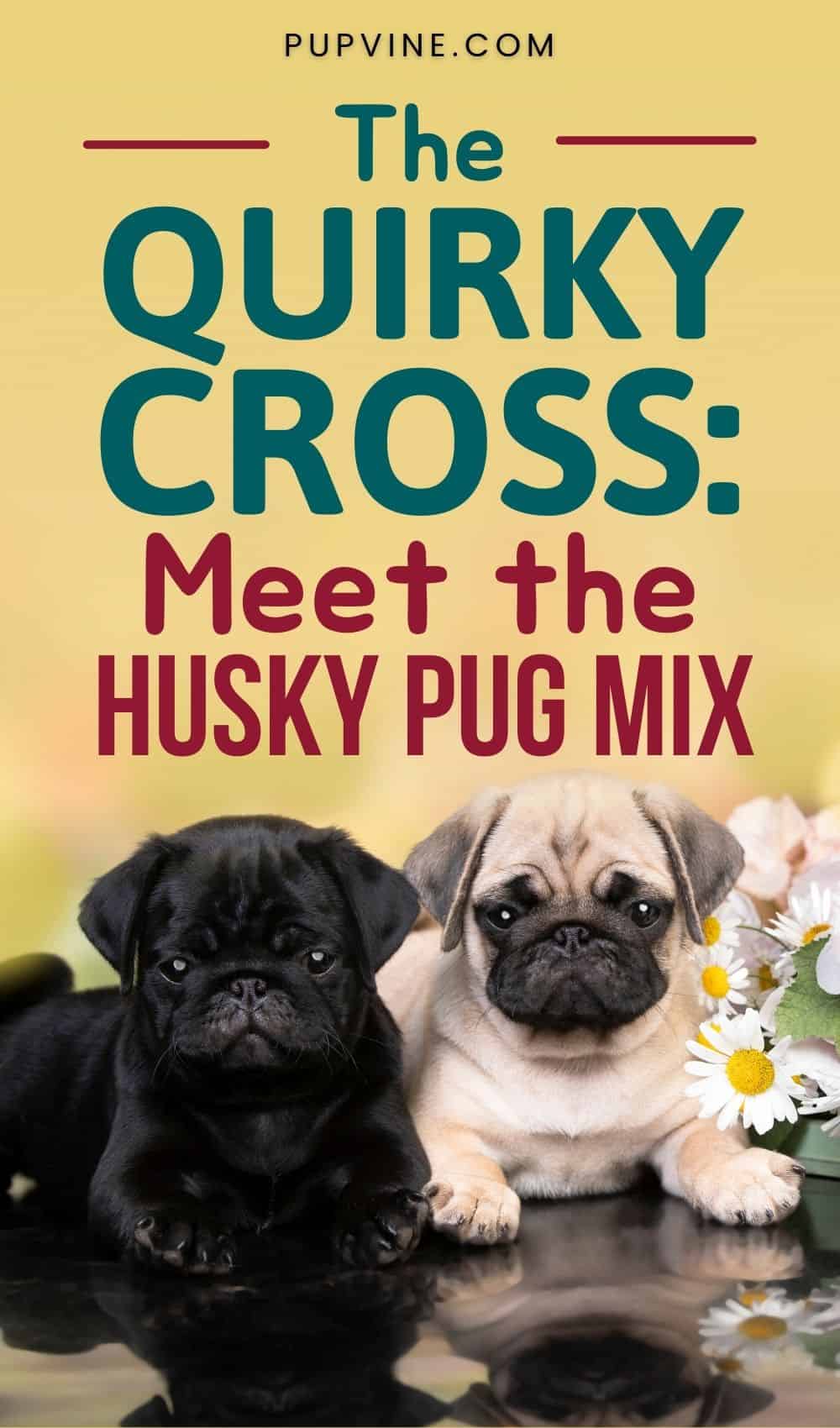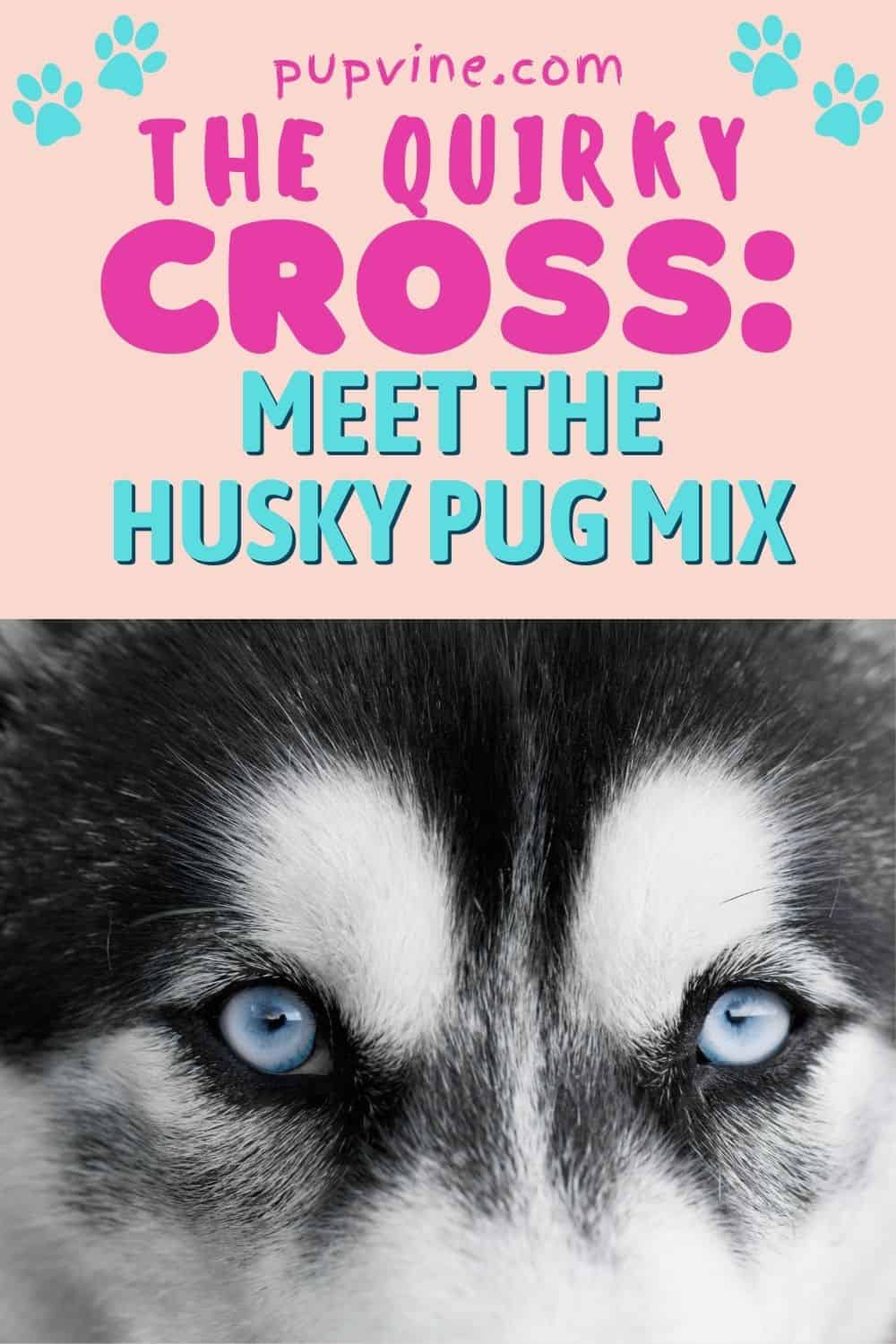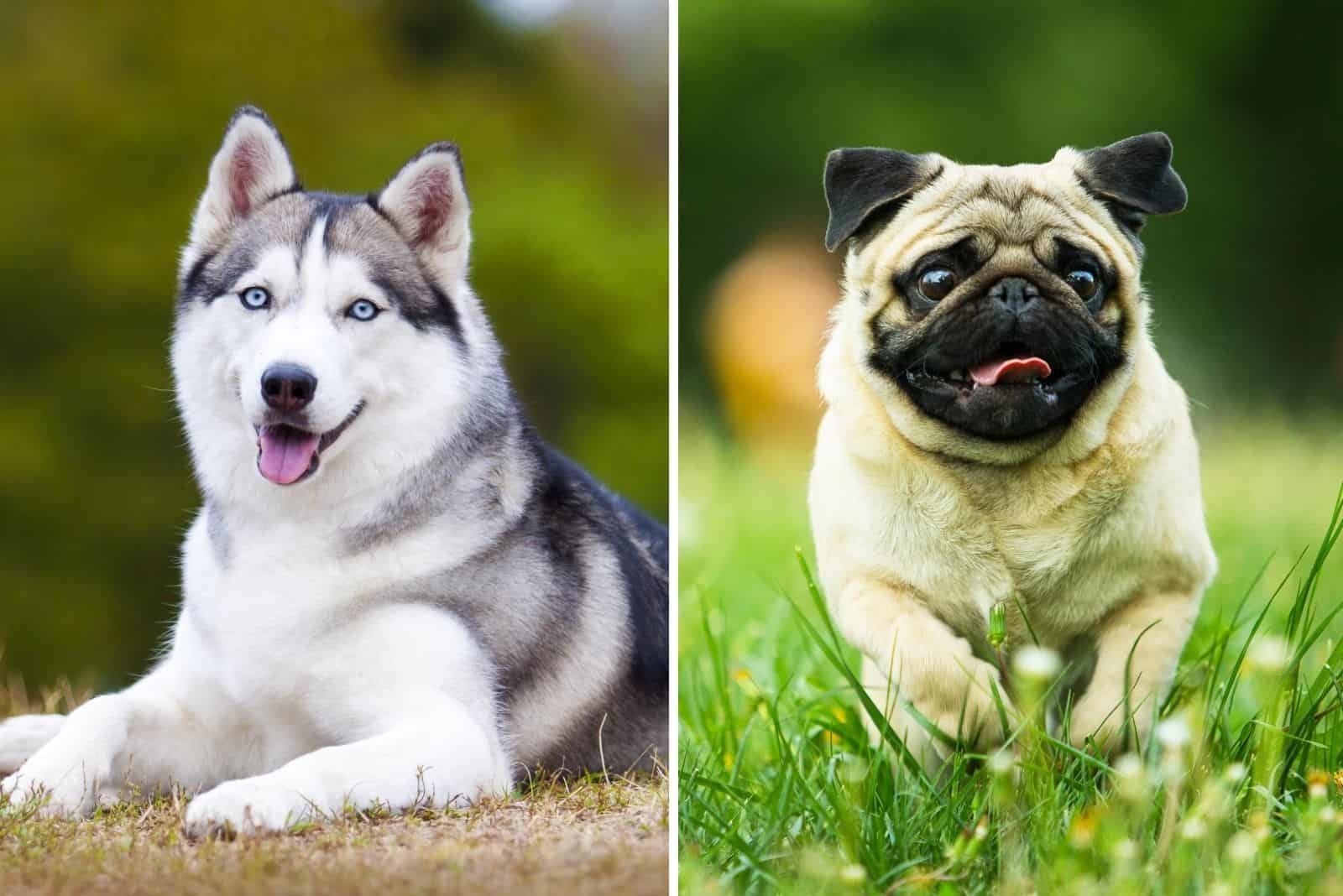The Husky Pug Mix is one of the most interesting Husky mixes of them all. Why? Have you checked out how small the Pug is? Mixing these two together gets you a quirky little Husky in the shape of a Pug.
Like many crossbreeds, the Pugsky, Hug, or Pug Husky is a breed with many values as well as some negative traits. It’s only up to you to decide if these traits bother you, or will Pugsky become your best friend forever.
Come, explore the awesome world of Pugskies here and let yourself have a little Hug!
History Of The Pug
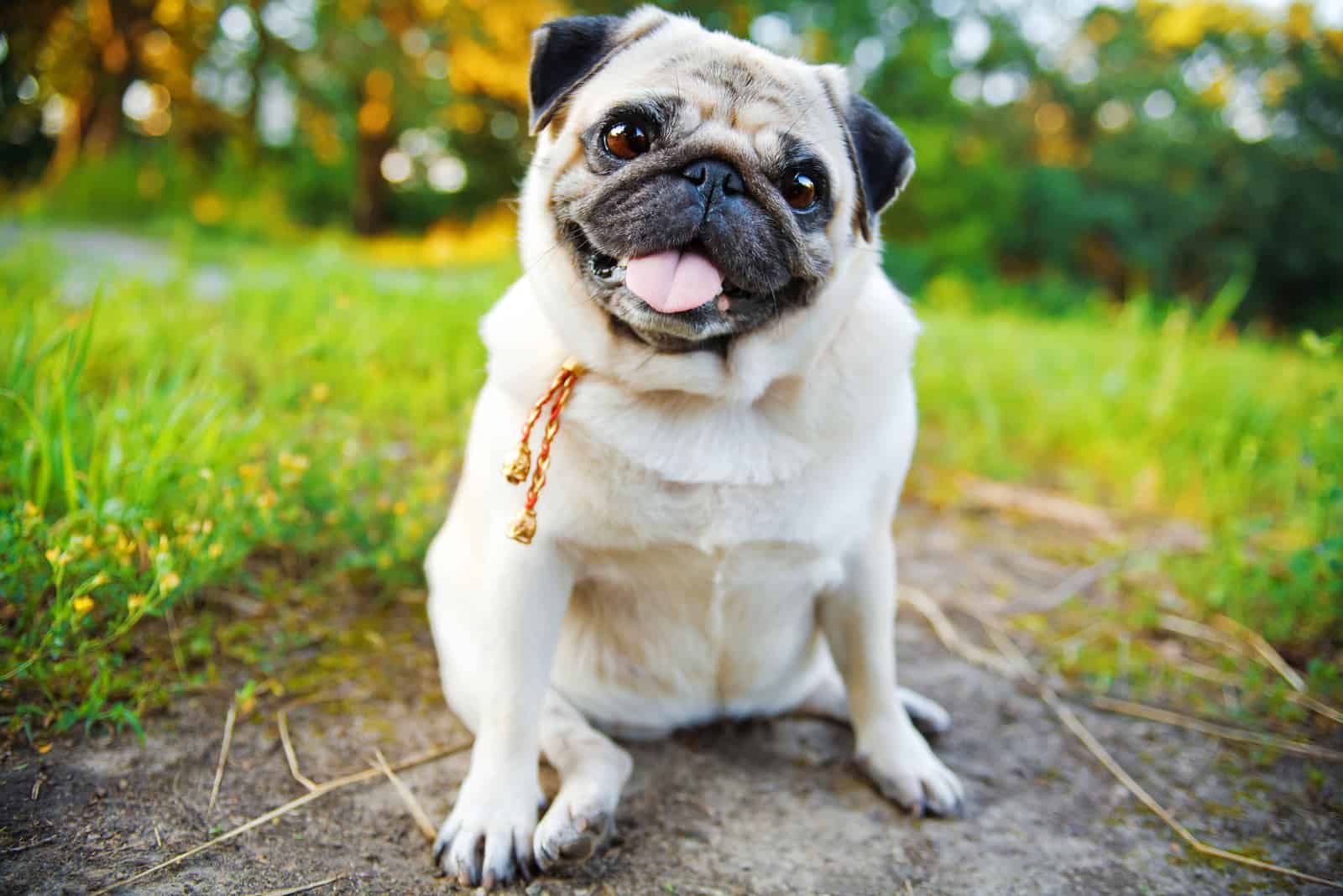
It is believed that the Pug got its name from the word ‘fist’ because of how its face and head look like one.
The popularity of this breed has been on the rise for the past several years. The Pug is now a beloved house pet with a deep history that not everyone’s familiar with.
Pugs originated back from the Han Dynasty in China, ruling from 206 B.C. to 200 A.C. They’re one of the oldest dog breeds in the world. Pugs were once very loved by the emperors and led luxurious lives.
There are historians who believe that Pugs are relatives of the Tibetan Mastiff. However, what is certain is that Pugs are short-nosed dogs like the Lo-Sze (the ancient Pug), the Pekingese, and the Lion Dog.
When China opened up boundaries and started trading with Europe back in the 1500s, the Pugs made their first appearance in Europe. Dutch traders brought them to the Old Continent.
Ever since, Pugs have been beloved dogs for many royalties in Europe, including even Queen Victoria who was a proud dog owner of several Pugs!
The Pug’s way to the United States was a bit longer. This dog breed reached the States only after the Civil War, and the AKC recognized the Pug in 1885.
Nowadays, Pugs, as well as Pug mixes, are the top choice for people looking for small dogs with big tempers and an even bigger heart.
The Husky History
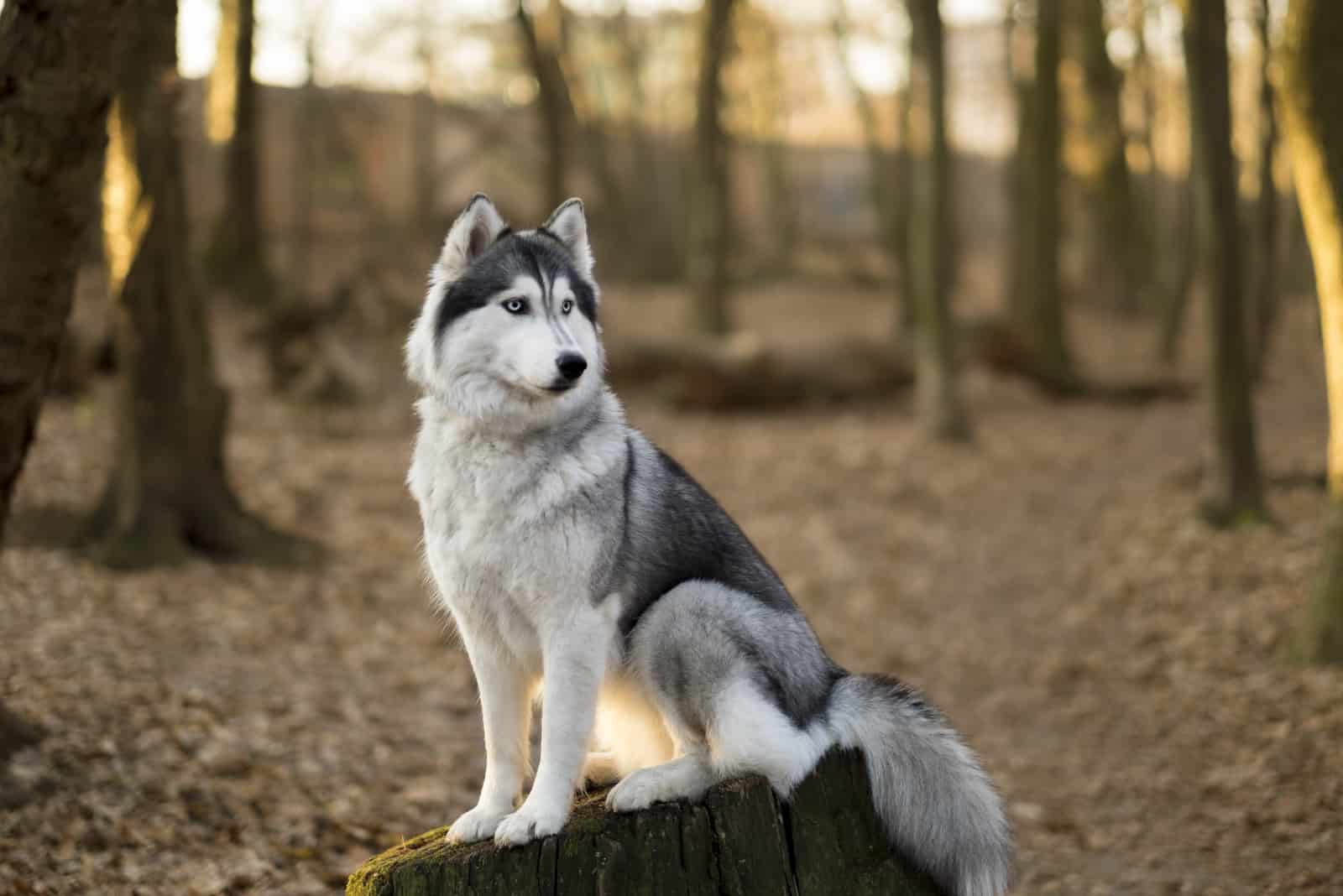
The Siberian Husky also has a memorable story behind the origin of the breed. Actually, Huskies are one of the oldest dog breeds in the world, used primarily as working dogs, and later as companion dogs.
Thousands of years ago, a nomadic group of people, better known as the Chukchi Tribe, began breeding Siberian Huskies. Since the tribe came from Eastern Siberia it was only natural to add the Siberian part to the dog’s name.
They followed a hunter-gatherer lifestyle, always migrating, and never settling anywhere for too long. Such a lifestyle required a protector, which came in the shape of the Siberian Husky. Huskies were used to pull heavy sleds filled with goods across the land in arctic conditions.
In addition, they proved themselves to be excellent hunting dogs.
Keeping in mind they’ve been here for a while, we can say that Huskies have become one of the most resilient breeds, packed with high energy levels, an enduring work drive, and excellent tolerance to harsh weather conditions.
Even the Chukchis knew how to treat this man’s best friend. Huskies shared tents with the tribe as well as their food. This could only be the reason why these dogs are so sociable, friendly, and affectionate.
When the Gold Rush made it to Alaska, Siberian Huskies made it, too. They were utilized to pull sleds once again. Shortly after this, the dogs were exported to the States in 1908 to take part in the All Alaska Sweepstakes for 1909.
The pack of Huskies was actually winning the famous race, but the leader was bribed to let the two local teams win in order to stop the major controversy.
Their rich history only helped the Huskies to become what they are today: one excellent dog breed!
How To Breed A Pugsky – A Husky And Pug Mix?
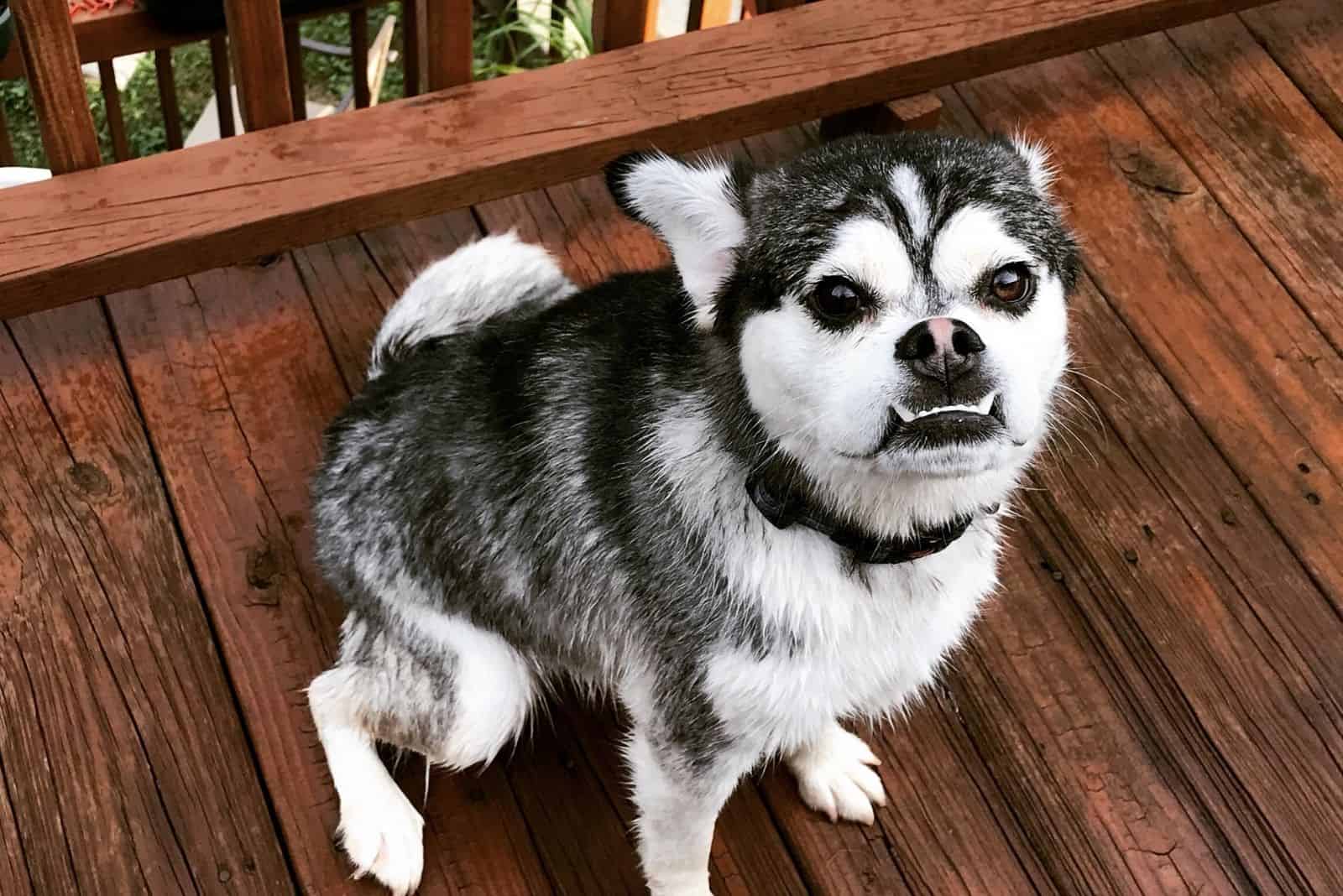
It’s not certain when the first Pugsky was bred, but what we can surely claim is that the Husky Pug mix is a designer dog breed that boomed in the last two decades. This leads us to think that the Pugsky was indeed bred twenty years ago or so.
As always, the debate as to whether to crossbreed or not is a burning question. Many breeders argue that the F1 dogs have more health issues and bad temperament than other generations.
If we put the differences between the generations aside, we should focus on what’s really important when buying a designer breed. Always make sure the breeder provides you with proof of the purebred parent’s health.
Here’s Why You Should Avoid Getting a Husky Mixed With a Pug
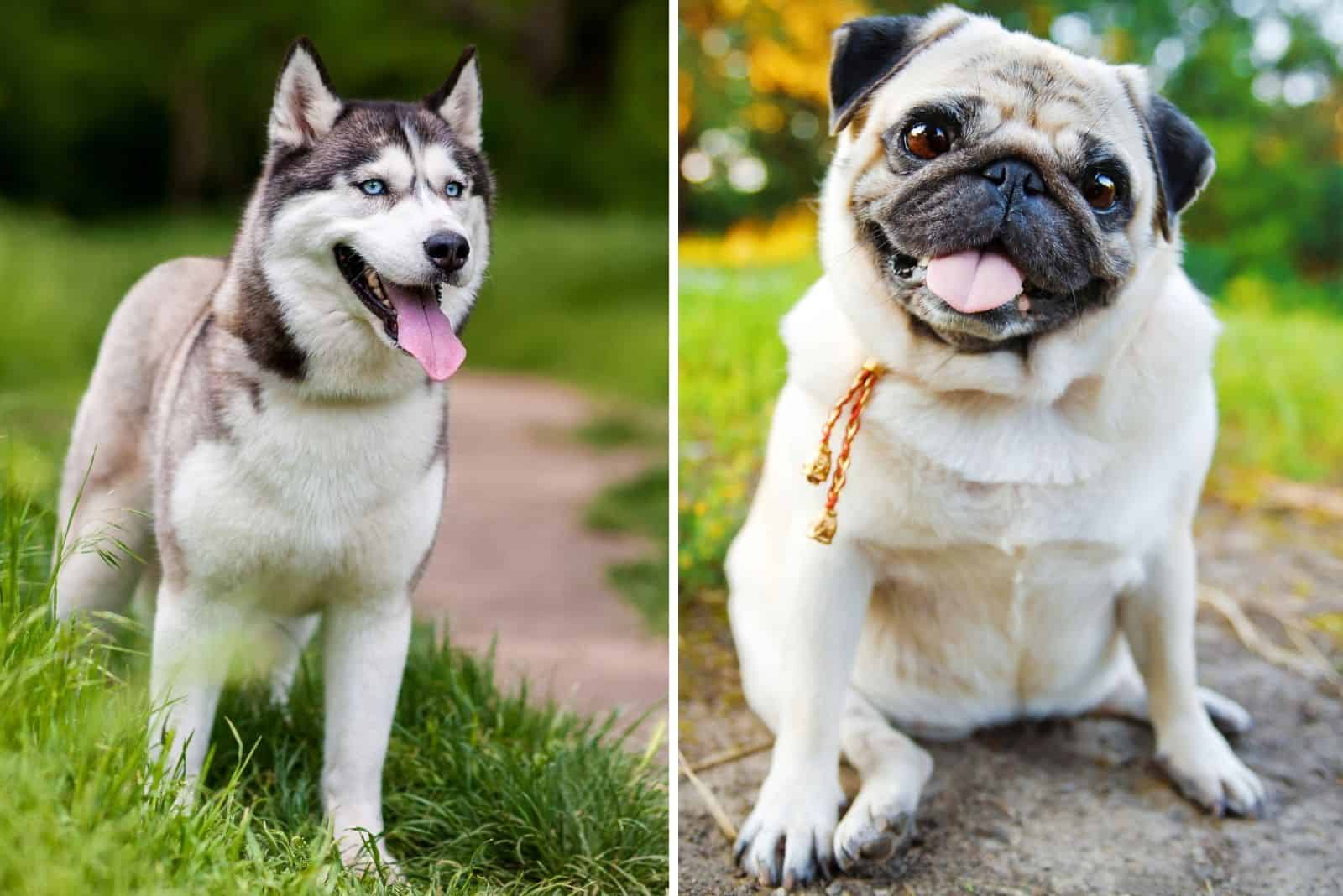
There isn’t a simple answer to the question of getting a Husky Pug mix. Reasons why not to get this mixed breed do exist as well as the reasons why you need one in your life.
Here are four reasons why the Husky Pug Mix isn’t a dog for you:
• They’re prone to a lot of serious health issues
• They’re hard to train and can be significantly stubborn
• They’re high maintenance and require lots of attention
• The Pug genes make them inadequate for weather that is too hot or too cold
Here’s Why You Should Get A Husky Pug Mix
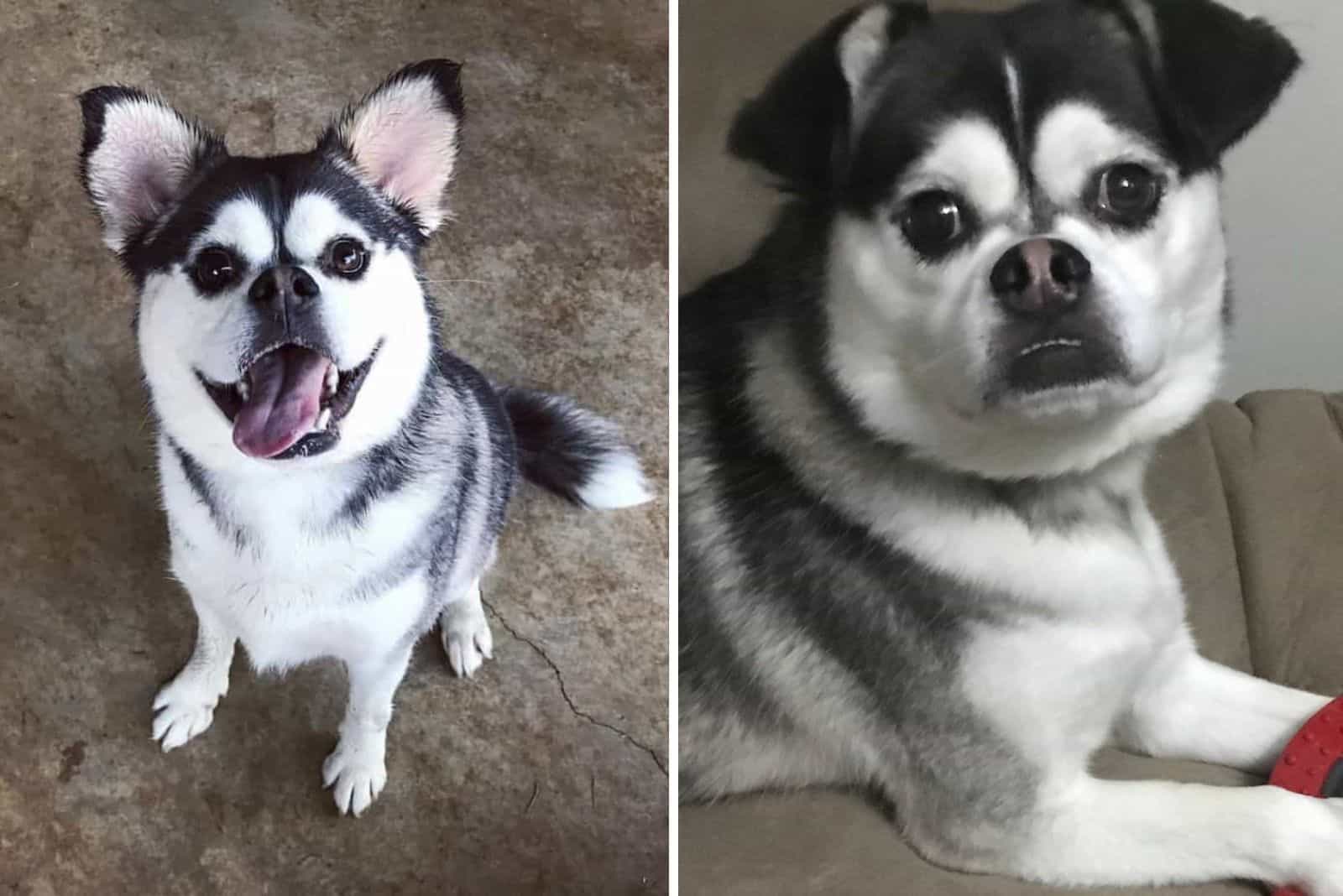
If the Hug is your hybrid of choice, then you should be familiar with their positive sides.
Here are four reasons why this is the perfect fit for you:
• They’re great family dogs and good with kids
• They’re very friendly and are rarely ever aggressive
• If the situation requires, they can make great watchdogs for your family
• They’re small; they don’t need much space or require a lot of exercise
Size and Height – How Big Does a Husky Pug Mix Get?
The Siberian Husky and the Pug are two dog breeds that couldn’t be any more different even if they tried. The best way to describe the Hug dog is to imagine a mini Husky in the shape of a Pug, along with a Pug’s features.
The Husky is a medium-sized dog, but the Pug is a small pup. The hybrid of these two can be either small or medium, but the small ones are more usual.
Due to immense differences between the parent breeds, the Hug offspring could be as small as the Pug or as big as the Husky.
The average height of a full-grown Husky Pug mix is from 10 to 23 inches, depending on which parent the puppy takes after. For example, if you breed a teacup Husky with a Pug you’ll definitely get a teensy tiny Hug puppy.
Weight: How Big Do Hugs Get?

Just as its height, the weight of the Hug also depends on the parents.
The average weight of a Husky Pug hybrid dog is somewhere around 15 pounds to 60 pounds, which is quite a big range. The best way to tell the size of your future pup is to look at the parents. You can’t just guess that your pup will be as tiny as the pug puppy. It can grow to be a normal size, too!
What Does The Hug Look Like: Coat, Color, and Markings</h3
The Husky parent has a medium to long, thick double-layered coat. The Pug parent also has a thick coat, which is double-layered, even though it feels smooth and glossy.
It’s the colors and markings that are different with these two breeds. Huskies are usually white, grey, brown, black, or red, with special markings on the face, around the eyes, and on the head. The Pug side of the family usually carries a fawn color with a dark snout.
The mix of these two breeds will be either one or the other. In other words, it will resemble the Pug breed or the Husky parent. A color or marking blend is extremely rare.
Nose and Snout
As for the nose and snout of each parent breed, they couldn’t be more different. A long prominent snout is a characteristic of a Husky while the Pug’s snout is pretty much non-existent. The Husky Pug mix would have a short snout, peeking just a little more than a Pug’s snout would.
Ears
Pugs have small and floppy ears while Huskies have large triangle-standing ears. The mix of these two can have all sorts of ear shapes.
There’s an interesting observation concerning Husky Pug mixes. It appears that when the coat color and markings resemble the Husky side of the family, the ears tend to be floppy like the Pug’s. The same goes the other way around. Isn’t that pretty awesome?
Eyes
The Siberian Husky has one visually striking feature that you can’t miss… It’s their eyes! Often, with a condition called heterochromia, their eyes steal all the attention. Heterochromia is a condition that causes a Husky’s blue/white eyes, or sometimes a combination of the two colors.
Husky Pug mixes have piercing blue eyes just the same as Huskies have. Some rare cases exhibit one brown and one blue eye.
Husky Pug Mix Personality and Temperament
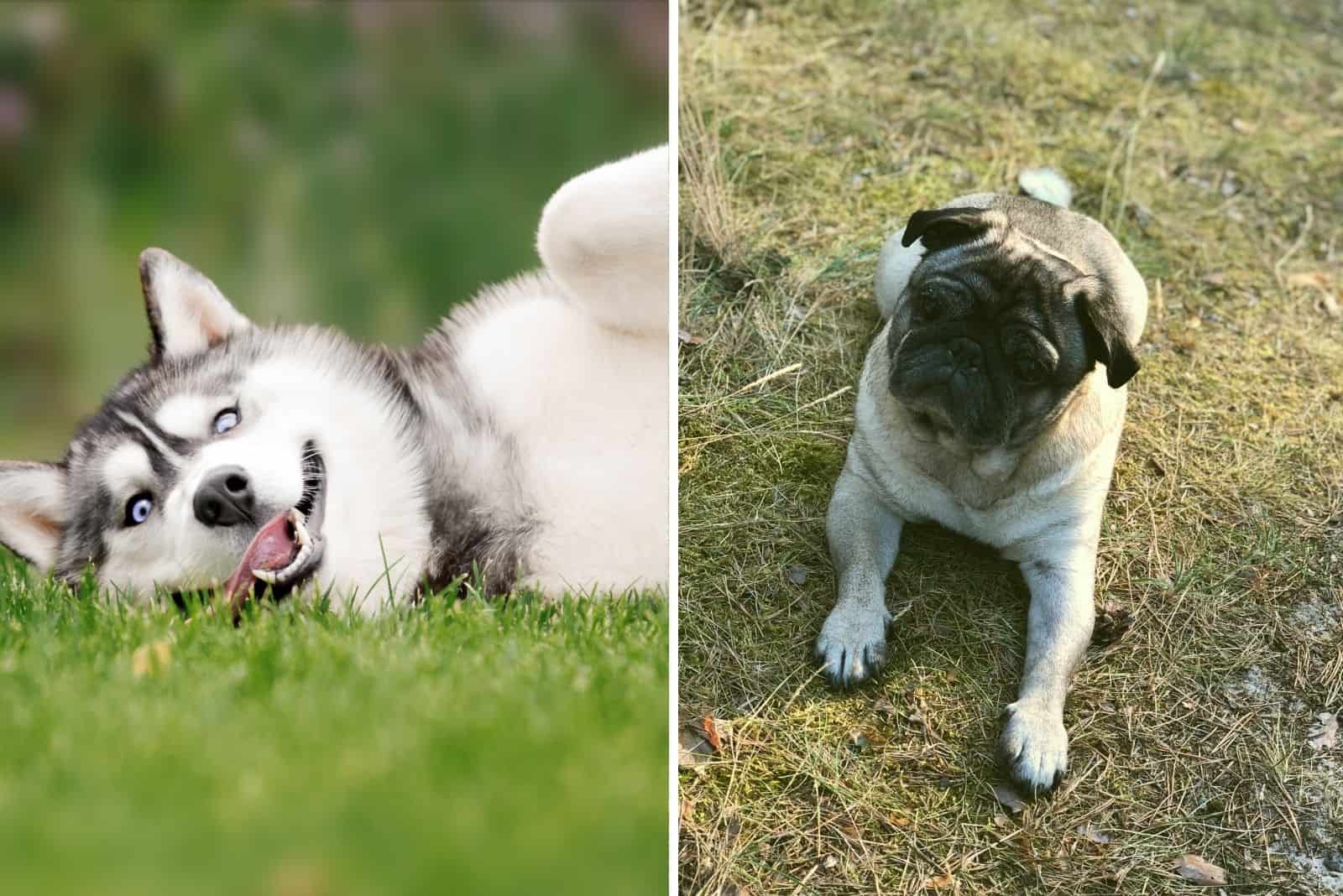
Every dog is different. You can’t put all pups in the same basket. Some of them will show personality from day one. If you keep this in mind, you won’t have issues with adapting to your new buddy.
One of the biggest effects on temperament is the temperament of the parent breeds. If one of the parents has a behavioral issue, then it’s highly likely it will pass down to the offspring.
Still, both the Husky and the Pug are friendly, loving, and affectionate. They’re perfect family pets! There’s almost a 100% chance that your Hug will be a great companion for the entire family. Both breeds love getting attention, and their mix will be a pup that loves cuddling all the time!
The Husky is the friendliest of them all. These puppers know no enemies or strangers. Everybody’s a buddy to them.
However, the Pug is not that friendly. They need plenty of strong socialization training to become friendly. They aren’t aggressive, but they can show signs of aggression towards other dogs and strangers.
Every Husky and Pug mix needs socialization training.
Money Talk: How Much Does The Pug Husky Cost?
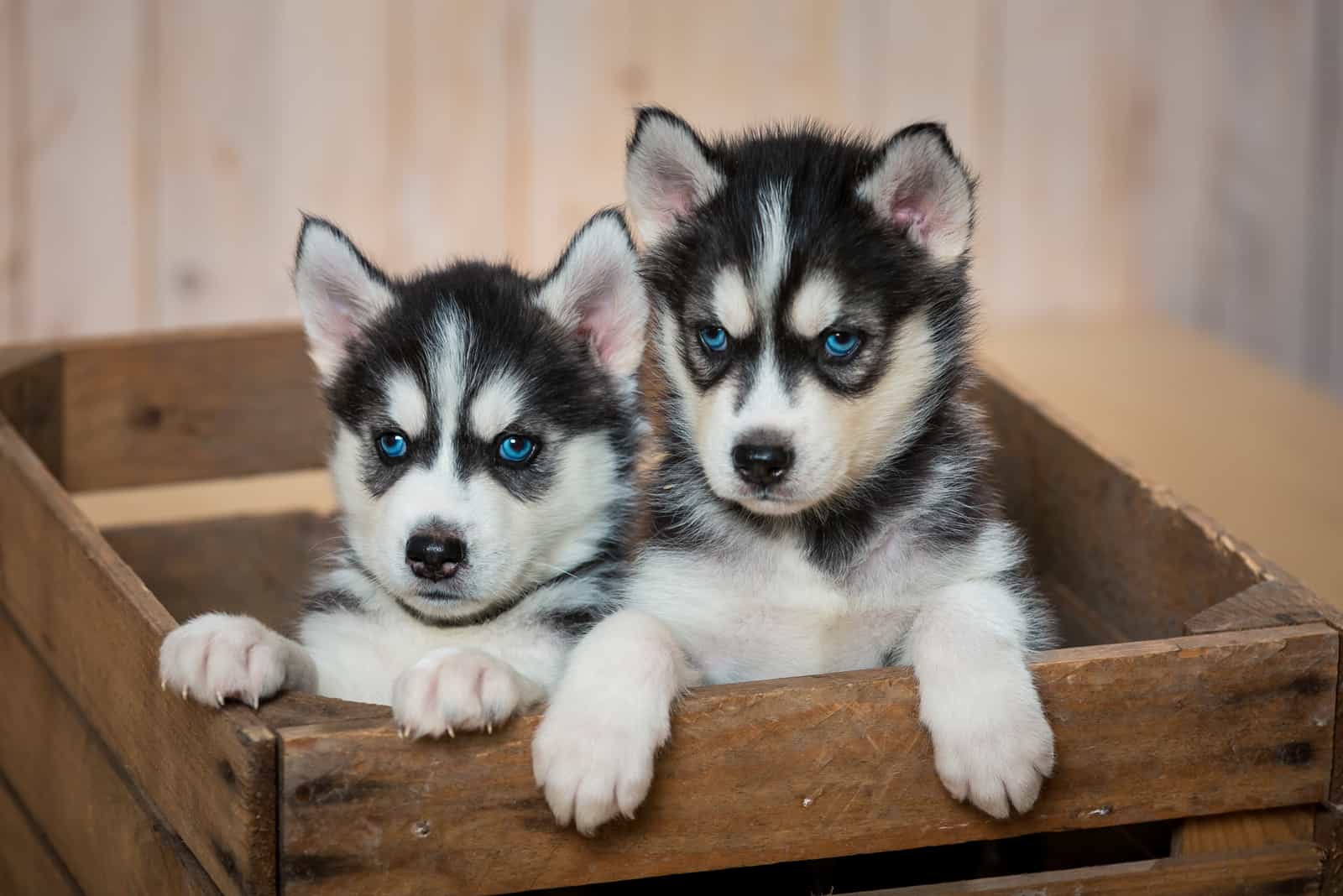
The cost of Hug puppies depends on the breeder, the parents, and the location in which you’re buying the dog.
The average cost of a Husky Pug is $1,200 to $2,500.
This is higher than the cost of parents, as, for example, purebred Pugs cost $600 to $2,000 on average.
We understand that it’s exciting to pick a new puppy, but still, you need to keep your head cool. Keep these basic things to look for in mind when getting a new puppy:
• Buy from a trusted breeder who has references you can easily check on. It would be best if a veterinarian recommends you a breeder.
• A good breeder won’t pressure you into making a purchase. If the breeder is pushy, this means he’s only doing it for the money.
• Make sure the breeder has had the important healthy check-ups and tests done for the new puppy.
• You should get proper certifications and health documentation for the parents of the puppy. Also, it wouldn’t harm you to see the parents and get a general idea of their temperament and well-being. If something feels wrong, it probably is wrong.
• Avoid buying a puppy online. You wouldn’t believe how many illegitimate breeders are on the Internet looking for easy cash.
How To Groom A Husky Pug Mix
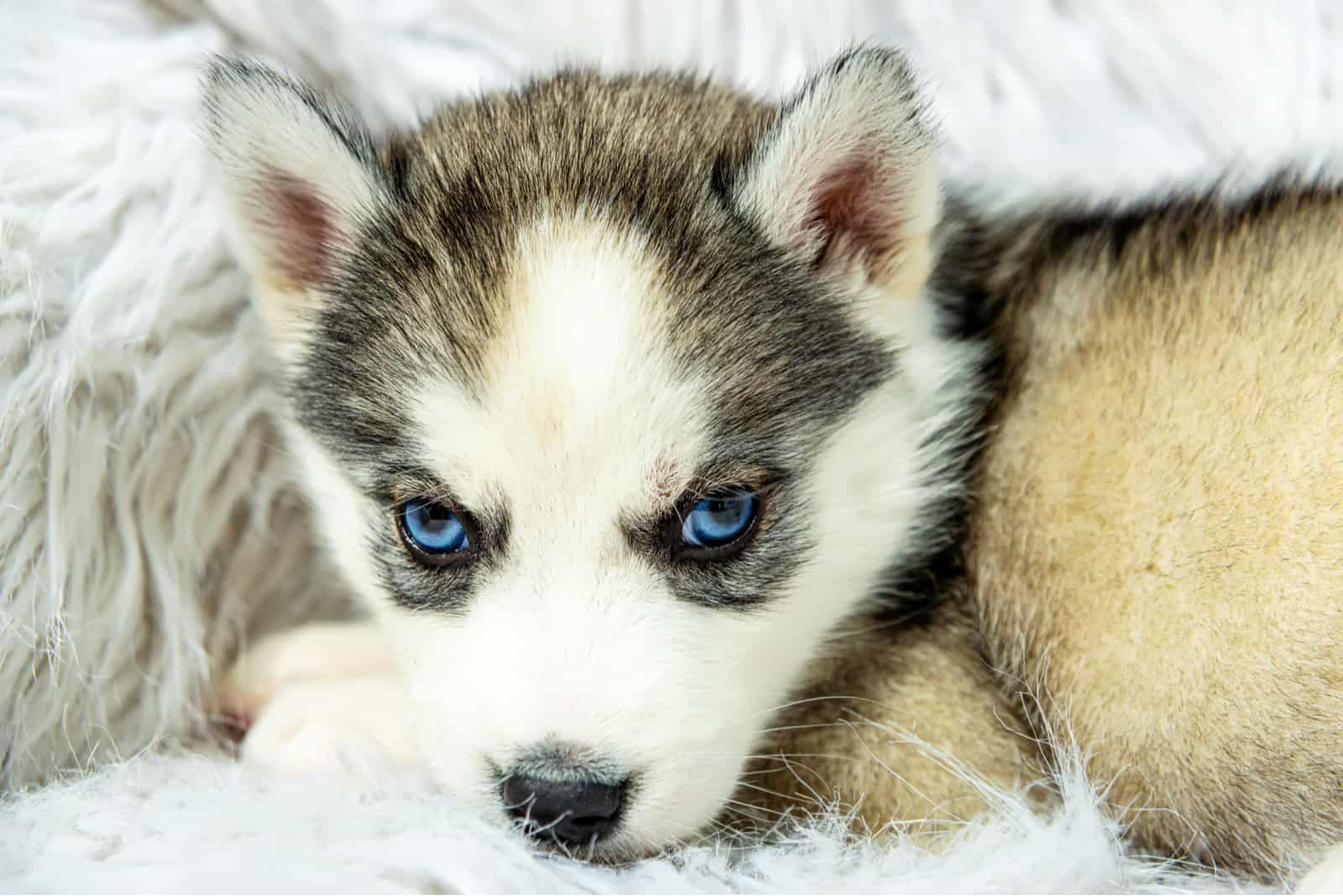
Your Hug dog may have either a Husky’s long hair or a Pug’s short hair. Either way, you’re doomed to groom.
All jokes aside, grooming is an important part of keeping all pups healthy. A Husky Pug mix requires frequent grooming. The offspring may inherit the Husky’s long hair or the Pug’s short hair.
If your pup has a smooth Pug coat, then you should brush it once or twice a week. This will remove any matting as well as dirt, dust, and hair tangles.
If the pooch resembles the Husky side, you’ll need to brush it two to four times a week. Bathing should not be that often to preserve the coat’s natural oils. The longer the hair is, the more dead hair will be trapped in the undercoat. Huskies are huge shedders, so don’t be surprised if you get to build a whole new dog out of the brushed hair!
Working Out With Your Husky And Pug Cross
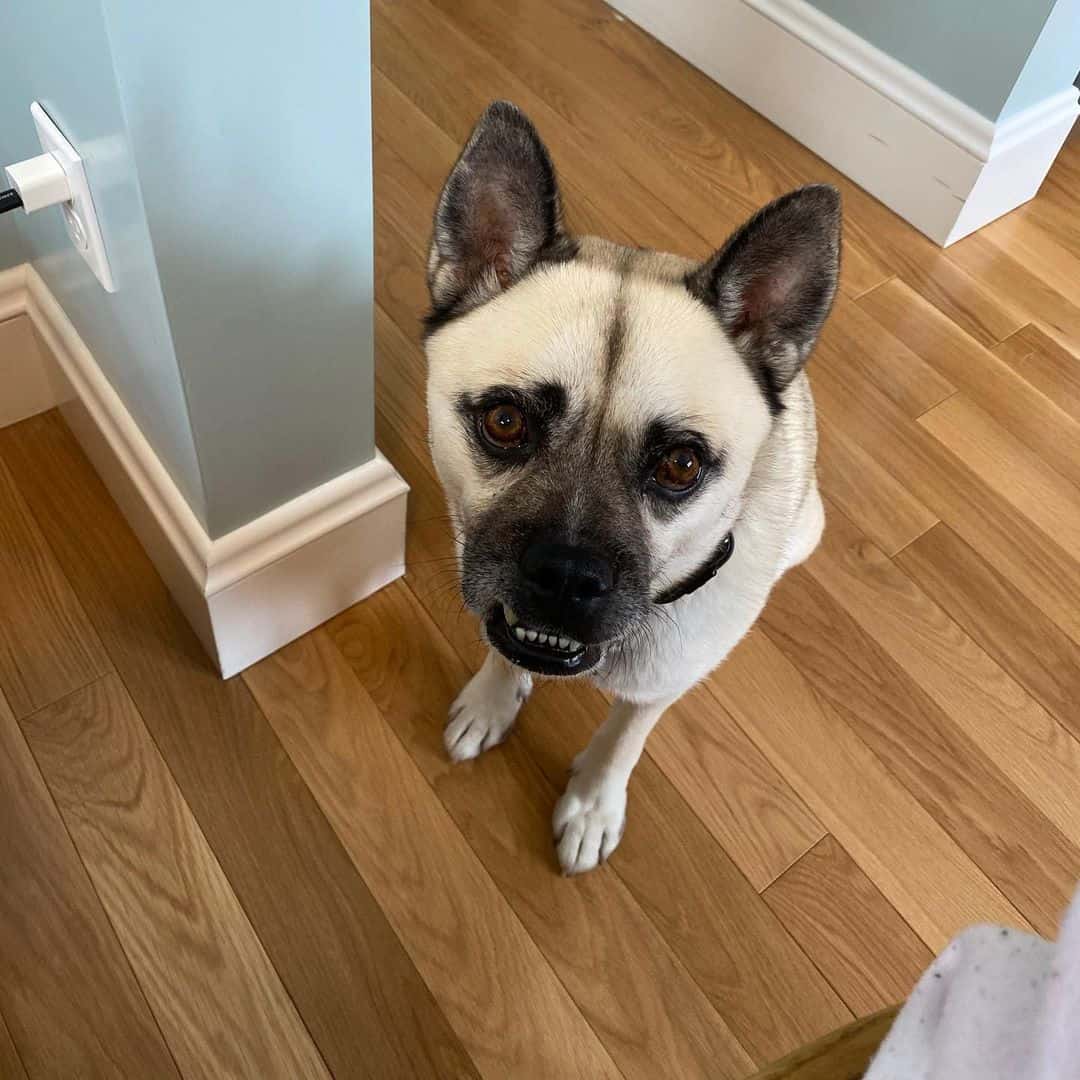
Photo from: @kodak_the_hug
The two parent breeds are quite different when it comes to their exercise requirements. The only way you’ll know how much exercise your cross needs is to wait until it grows older. The exercise requirement depends on whether the pup has more Husky or Pug genes.
Siberian Huskies need around two hours of intense exercise every day. These dogs have an extremely high energy level and need to spend it on physical and mental exercise. If they don’t receive their daily dose of exercising, Huskies get destructive and behave badly.
Pugs are much smaller than Huskies. They have lots of energy, but only thirty or forty minutes of working out daily will keep them satisfied. The usual routines, like playing around the house and running, will do the trick, too!
Once again, wait until your hybrid grows up. As a rule, big dogs need more exercise, so always bear that in mind.
Dinner Time: How To Feed Your Hug
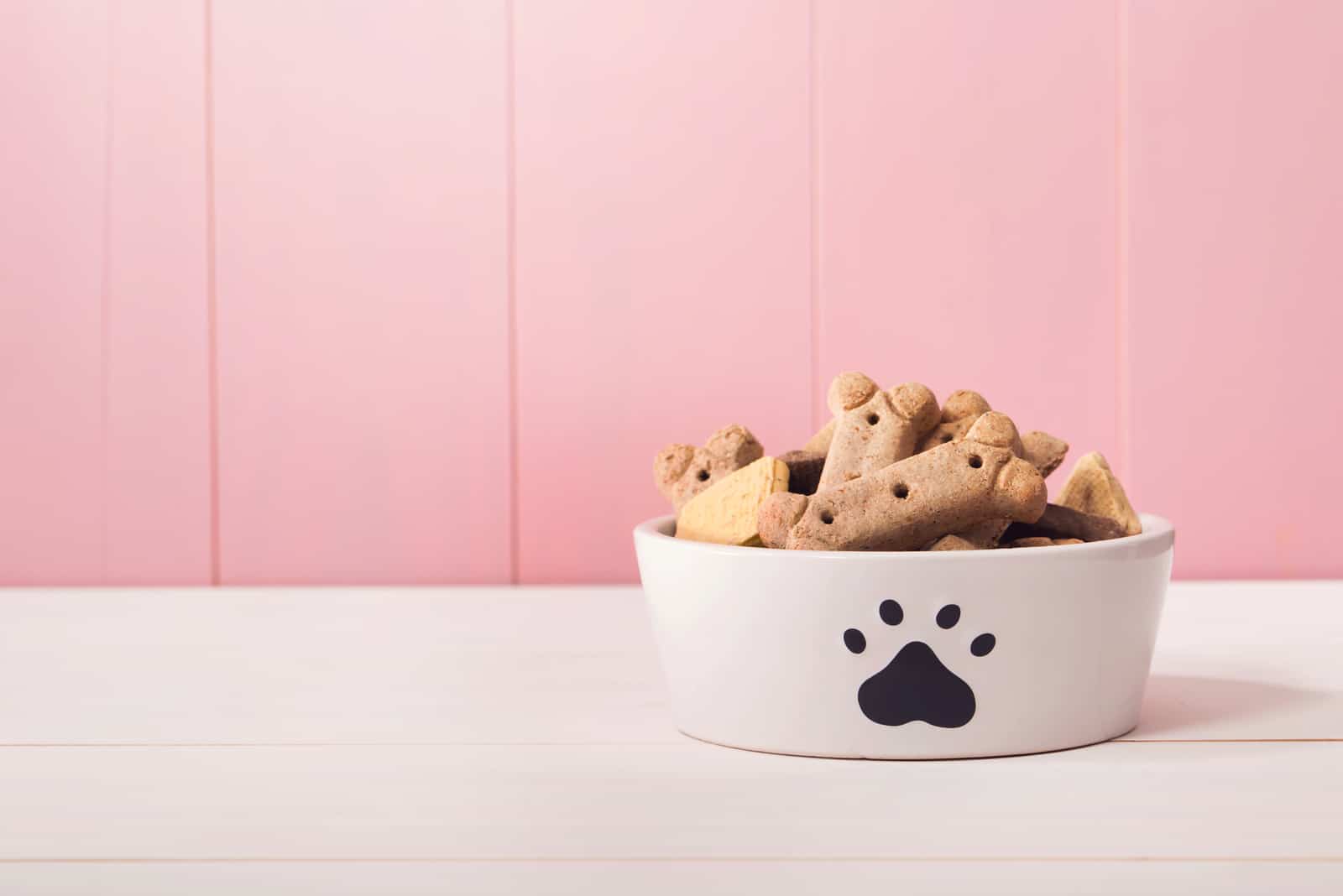
Despite being large dogs, Siberian Huskies don’t have a big appetite, and they aren’t greedy at all. A Husky will leave the food bowl full if they aren’t hungry anymore without any problems. People often mistake this for Huskies being fussy eaters. This is absolutely wrong.
If a Husky gets too full, their sensitive stomach will turn on the alarm.
Pugs, in general, are normal eaters. They don’t have any issues with eating, but they can be a bit fussy. They, too, have sensitive stomachs, but their eating habits are normal.
Here are some basic feeding tips for the Husky Pug mix:
• Puppies eat 3 cups of high-quality dry kibble made for puppies
• Adult dogs eat 2 cups of high-quality dry kibble made for adult dogs
• Sensitive stomachs need a limited-ingredient dog food made especially for them
• Avoid the raw food diet
• Don’t give more than 10% of treats on a daily basis
• Feeding times should always be on schedule
• Don’t leave the bowl full with food in it because they’re prone to obesity
• Check with your vet for the best diet for your dog
Avoid giving your Pugsky human food, but if you really must, follow the list of good fruits and veggies you can give your pup as a treat:
• edamame
• jicama
Training Requirements
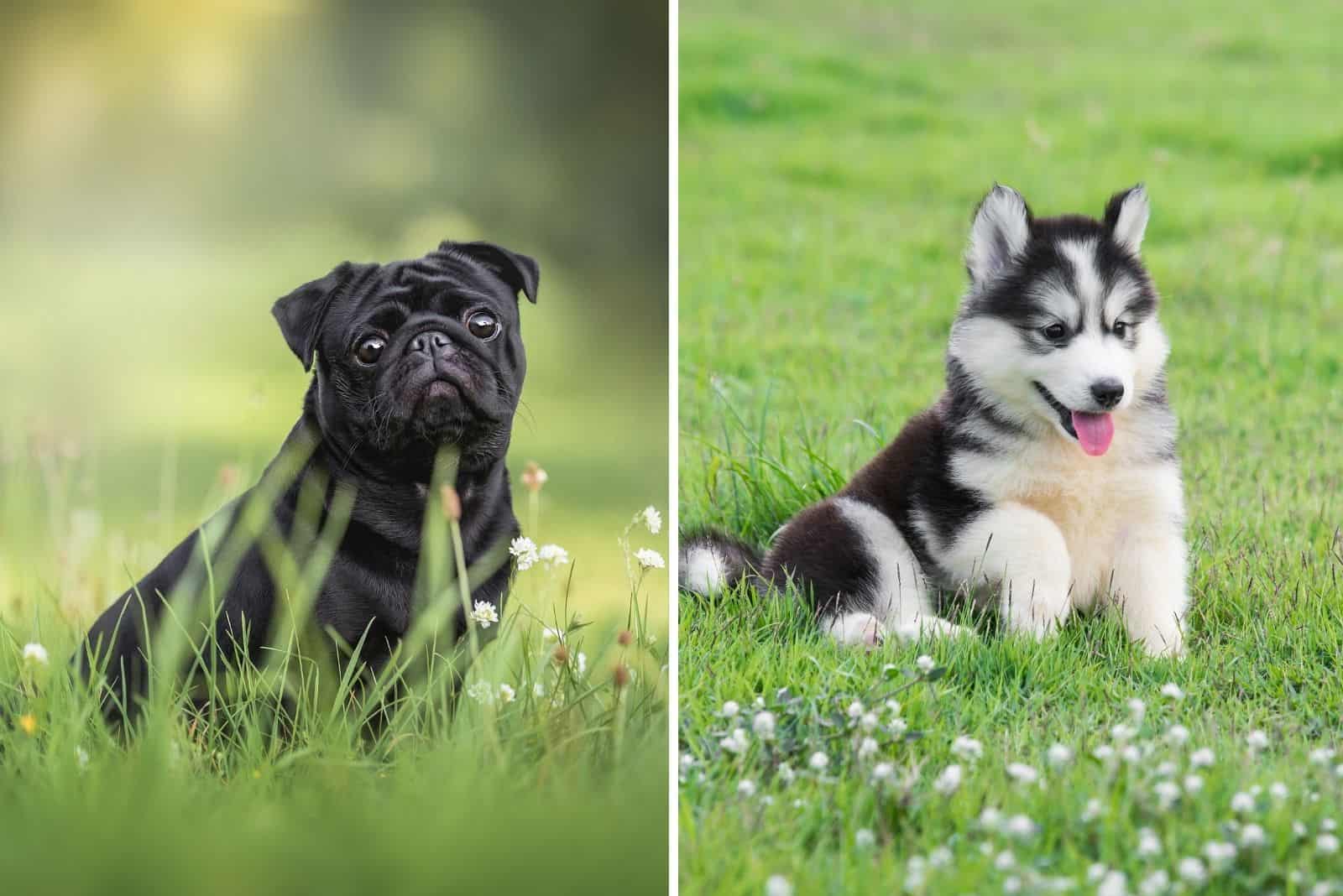
Siberian Huskies are of average intelligence, despite being easy to train. But, sometimes they’re not easy to handle. Huskies are known for being big barkers and howlers, so don’t be surprised if they get vocal as soon as you start commanding them.
Pugs belong in the same category. They can be quite obedient once trained.
What’s common for both breeds is that they have a stubborn streak, which can be very challenging. Puppies with many Husky genes will not be easy to train, and you’ll be tested from the start.
Best practices for training a Husky Pug mix:
• Start the training from the moment you get the puppy. Many new owners let the puppy run wildly and decide to start the training when they grow old enough. The truth is, puppies should be trained immediately… the moment you get them. The longer you wait, the harder it is.
• Let them know who’s in charge. You’re the pack leader; you’re in charge. When you establish this relationship, all subsequent training will be easier. You’re the one who’s making commands, not your pup.
• All training should be Positive-Reinforcement Based. Never punish a puppy for doing something wrong. Always praise it after a job well done by giving it a small treat or a pat on the head. They connect the dots quite fast and figure out what’s supposed to be done.
• Consistent training every day will be needed. Training day is every day. The more commands you go through, the more obedient the hybrid pup will be.
• Basic obedience commands should come first: Sit, Stay, Lay, Come Here, Paw. When the dog masters these commands, then all the other ones, including the difficult commands, will be a piece of cake!
• Recall and sociability training should start as soon as possible after basic commands. Since Huskies and Pugs are stubborn and a bit aloof, this training is extremely important for all future Hug owners.
Husky Pug Mix Health Issues
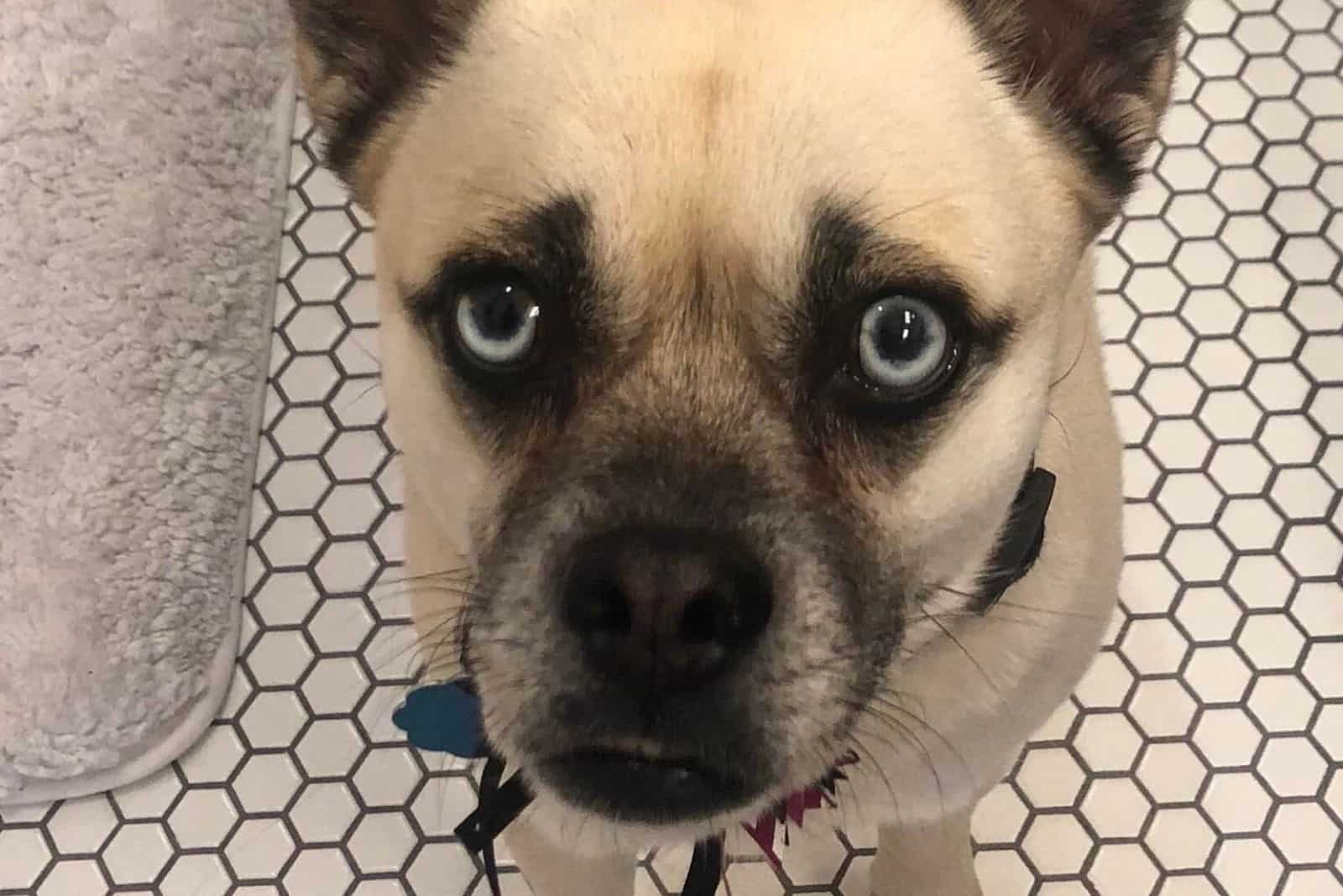
The Husky Pug mix has a lifespan of 12 to 15 years. Despite this generous lifespan, this crossbreed is prone to several severe health issues.
While the Husky is a generally healthy breed with common health issues, the Pug is known for having many health problems. Therefore, this dog breed is likely to suffer from many different problems throughout life.
There is an illness that affects Pugs so much that it even has the name of the breed. It’s called Pug Dog Encephalitis (PDE), and it’s common among Pugs and considered to be a fatal inflammatory disease that affects the central nervous system.
Standard health problems of a Husky mixed with a Pug include:
• Pug Dog Encephalitis (PDE)
• Hip Dysplasia
• Elbow Dysplasia
• Brachycephalic Airway Obstruction Syndrome (BAOS)
• Cataracts
• Progressive Retinal Atrophy
• Dermatitis and Skin Issues which are typical for Pugs
• Follicular Dysplasia
• Zinc Deficiency
• Hypothyroidism
Avoiding these health issues at all costs is impossible. But, what you can do is give your best for your dog to have a healthy and active life, covered with check-ups at the vet. It may be pricey, but health is priceless.
In the End…
There’s no wonder why the Husky Pug mix is becoming so popular lately. In general, if we count out some health issues, this is one excellent designer dog!
You’d be blessed if you owned a Hug. You could have all the hugs you’d want anytime, anywhere!
Related Article:
